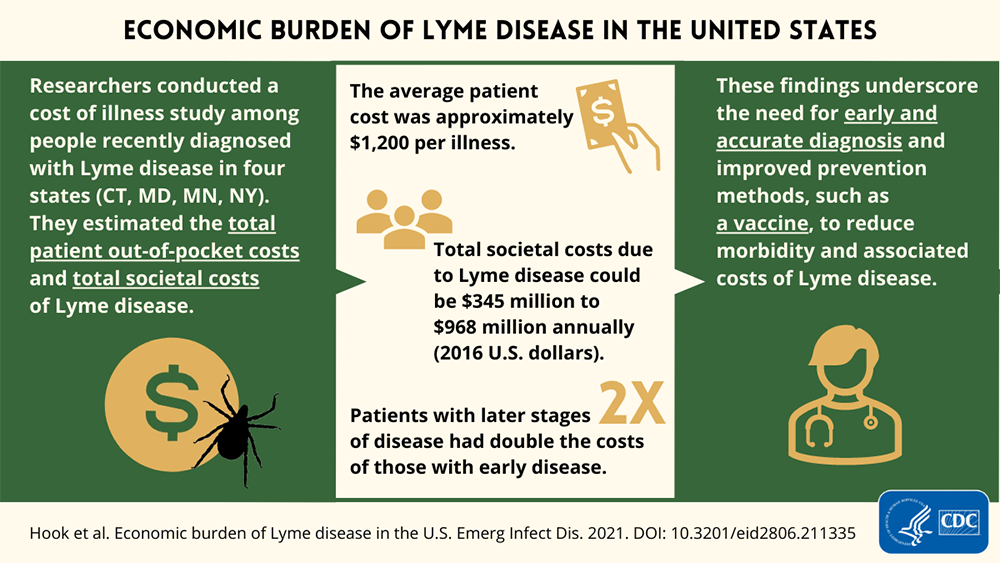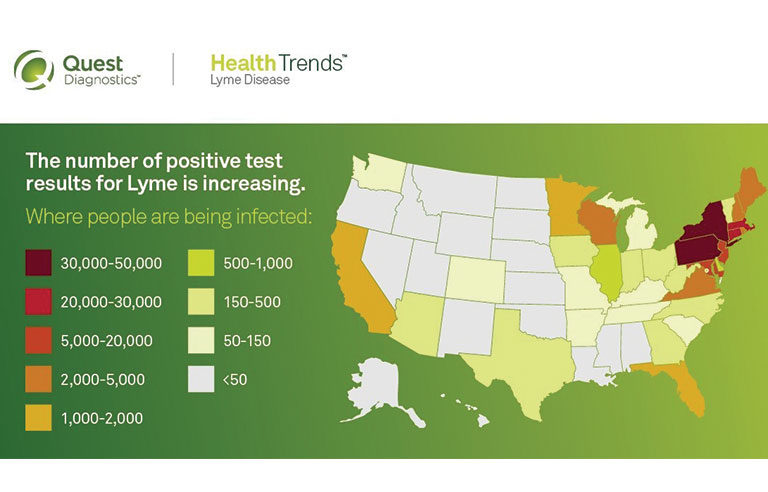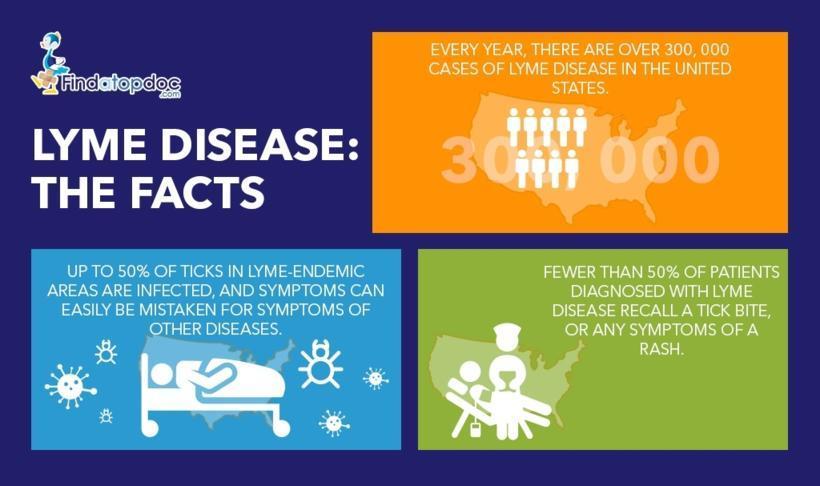Uncover the shocking surge in Lyme disease cases and the surprising factors contributing to this dangerous epidemic. #LymeDiseaseAwareness.
Table of Contents
- Introduction: The Growing Concern About Lyme Disease
- Section 1: What Is Lyme Disease?
- Section 2: Tracking the Ticks
- Reasons for the Rise
- Battling the Bug
- Long-Term Effects
- Treatment Adventures
- Section 7: Spreading the Word
- What’s Being Done?
- Conclusion: Staying One Step Ahead of Lyme Disease
- FAQs: Answering Your Curious Questions
Introduction: The Growing Concern About Lyme Disease
Let’s talk about Lyme disease, a tricky sickness you get from tiny bugs called ticks. These tiny creatures may seem harmless, but they can carry a big problem when it comes to our health.
Section 1: What Is Lyme Disease?
Let’s dive into the world of Lyme disease and understand why it’s important to know about this illness.
Understanding Tick-Borne Illnesses
Ticks are like tiny vampires that suck blood from animals and humans. Some ticks carry germs that can make us sick, and Lyme disease is one of those illnesses.
Symptoms of Lyme Disease
When someone gets bitten by a tick infected with Lyme disease, they might start feeling tired, have a fever, headache, and muscles that ache. Imagine feeling like you have the flu, except it doesn’t go away.
Section 2: Tracking the Ticks
Ticks are sneaky creatures that like to hide in specific places. These tiny bugs prefer to live in damp and dark habitats such as forests, tall grass, and shrubby areas. They especially love hanging out in areas where they can easily latch onto animals or humans passing by. Ticks are like tiny treasure hunters, waiting for their next meal to come close enough!

Image courtesy of www.cdc.gov via Google Images
How Ticks Find Their Way to People
Did you know that ticks are not great at flying or jumping like other bugs? Instead, they use a more cunning way to find their hosts – walking! Ticks might climb onto blades of grass or plants and wait patiently for an unsuspecting host to brush by. They have a sharp sense of smell to detect the carbon dioxide we breathe out, which guides them towards potential targets. Ticks can catch a ride on animals like deer or mice and then hop off onto humans when given the chance. So, be careful when walking through tick-prone areas, as these crafty insects are always on the lookout for their next meal!
Reasons for the Rise
Piecing together why there are more cases of Lyme disease now than before, we can identify a few key factors contributing to its increase.
The Climate Change Connection
How warmer, wetter weather is making life easier for ticks to thrive and spread Lyme disease. With climate change shifting habitats and altering ecosystems, ticks have more opportunities to expand their territories and come into contact with humans and animals. Warmer temperatures also prolong the lifespan of ticks, allowing them more time to infect hosts with the Lyme disease bacteria.
Increased Awareness and Reporting
Doctors are getting better at finding Lyme disease, which means more cases are being identified and reported. As awareness about Lyme disease grows, healthcare providers are becoming more attuned to its symptoms and are more likely to consider it in their diagnoses. Improved diagnostic methods and testing techniques have also led to more accurate identification of Lyme disease cases, further contributing to the rise in reported incidences.
Battling the Bug
Now that we know a bit more about Lyme disease and how it spreads, it’s time to figure out ways to protect ourselves from those pesky ticks. Let’s dive into understanding how we can battle the bug and prevent Lyme disease.

Image courtesy of www.safetyandhealthmagazine.com via Google Images
Early Diagnosis of Lyme Disease
When someone gets bitten by a tick, it’s crucial to detect Lyme disease early. Doctors have special tests to figure out if the bacteria that causes Lyme disease is present in our bodies. By identifying it quickly, we can start treatment right away to get rid of the infection.
Preventing Lyme Disease
There are simple and effective ways to keep ticks away and lower our risk of getting Lyme disease. Here are a few tips:
- Wear long sleeves and pants when playing in grassy or wooded areas.
- Use insect repellent with DEET to keep ticks from biting.
- Check your body and clothes for ticks after spending time outdoors.
- Shower after being outside to wash away any ticks that may be on your skin.
- If you find a tick on you, remove it carefully and properly with tweezers.
By following these simple steps, we can stay safe and reduce the chances of getting Lyme disease from tick bites.
Long-Term Effects
Have you ever wondered what happens if someone gets Lyme disease and it doesn’t go away? Let’s talk about how Lyme disease can stick around for a long time and what that means for people’s health.
Chronic Lyme Disease
Even after treatment, some adults and kids might still feel tired and achy because of Lyme disease. This might make it hard for them to do all the fun things they enjoy, like playing sports or hanging out with friends. It’s like having a sneaky bug that doesn’t want to leave them alone!
Treatment Adventures
When someone gets diagnosed with Lyme disease, doctors often turn to a powerful weapon to fight off those pesky ticks – antibiotics. These special medicines are like magical soldiers that help kick out the Lyme disease from the body. Just like how superheroes save the day in movies, antibiotics swoop in and take down the bad guys.

Image courtesy of www.transparencymarketresearch.com via Google Images
Long-Term Treatment for Tough Cases
While antibiotics work wonders for many people, some cases of Lyme disease need a bit more TLC. In these situations, doctors might have to come up with different plans to help the person get better. It’s like having a coach who switches up the game plan to make sure the team wins. With a bit of patience and some extra care, those tough cases of Lyme disease can also be defeated.
| Reasons for Rise in Lyme Disease | Description |
|---|---|
| Climate Change | Warmer temperatures and changes in precipitation patterns create ideal conditions for ticks to thrive, increasing the spread of Lyme disease. |
| Expansion of Tick Habitats | Urbanization and deforestation are leading to the expansion of areas where ticks can live, bringing them into closer contact with humans. |
| Increased Outdoor Activities | As more people engage in outdoor activities like hiking and camping, the risk of coming into contact with infected ticks also increases. |
| Improved Awareness and Reporting | Greater awareness of Lyme disease and improved reporting methods are leading to more accurate diagnosis and reporting of cases. |
Section 7: Spreading the Word
Explaining how important it is to tell others about Lyme disease and how to prevent it.
Why Awareness Matters
The more we all know about Lyme disease, the better we can protect ourselves and each other. By spreading the word about this tricky sickness, we can help keep our friends, family, and community safe.
What’s Being Done?
Understanding what scientists, doctors, and communities are doing to lower Lyme disease cases.

Image courtesy of www.findatopdoc.com via Google Images
Research and Studies
Smart scientists are always looking for better ways to treat and prevent Lyme disease. They study how the ticks behave, where they live, and how they spread diseases like Lyme. By learning more about these pesky bugs, they can come up with smarter ways to keep us safe.
Community Efforts
Town heroes are working together to make our parks and playgrounds safer from ticks. They organize events to teach everyone about preventing tick bites and what to do if you find a tick on you. By working as a team, we can make sure fewer people get sick from Lyme disease.
Conclusion: Staying One Step Ahead of Lyme Disease
Throughout this blog, we have delved into the world of ticks and Lyme disease, uncovering the ways we can protect ourselves and our loved ones from this sneaky sickness. By staying informed and proactive, we can stay one step ahead of Lyme disease and keep ourselves healthy.
Being Tick-Wise
Remember, ticks are tiny but tricky bugs that can make us sick. By understanding where they live, how they find their way to us, and how to prevent them from biting, we can reduce our risk of getting Lyme disease.
Early Detection and Prevention
Knowing the symptoms of Lyme disease and seeking early diagnosis is key. By getting treated promptly with antibiotics, we can stop the Lyme bacteria in its tracks and prevent the disease from becoming chronic.
Spreading Awareness
By spreading the word about Lyme disease and how to prevent it, we can help others stay safe. Awareness is vital in protecting ourselves and our communities from the dangers of tick-borne illnesses.
By staying educated, vigilant, and proactive, we can all work together to combat Lyme disease and keep ourselves healthy and happy. So, let’s continue sharing knowledge, taking precautions, and staying one step ahead of Lyme disease!
FAQs: Answering Your Curious Questions
Get the answers to some super-smart questions you might have about Lyme disease.
Can you catch Lyme disease from another person?
We’ll find out how Lyme disease is spread and if you can get it from your friends.
How can I tell if a tick on me is carrying Lyme disease?
Understand how to spot a dangerous tick that might give you Lyme disease.
What can my family do to keep ticks away from our home?
List of awesome tips for making your home a no-tick zone!





